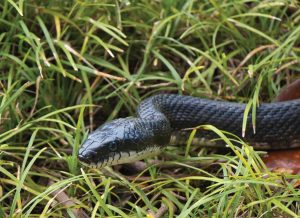It’s been many years ago, but a family living close to me when I was a boy had what can only be described as a true symbiotic relationship with a flock of buzzards.
The family scratched out a meager income from farming a few acres, but their main cash crop was raising chickens for eggs and meat. The children included several rough and tumble brothers, and everyone had their assigned chores. Tending to the chickens was one, and it included feeding, watering and cleaning the chicken barn.
With hundreds of chickens, there always were a few casualties among the flock each week. The boys were instructed to take the bodies of dead chickens to the lower pasture far away from the house. The boys soon learned dragging a sack full of dead chickens to the lower “40” was a real job.
The weekly parade of chicken carcasses to the lower pasture was soon picked up upon by a flock of turkey buzzards. Each week, the buzzards would bide their time, soaring overhead, and wait patiently for their “take out” to be delivered. When the chicken carcasses hit the ground, the flock of aerial sanitation engineers quickly cleaned up the remains.
Now the boys may have been a little rough around the edges, and maybe a bit unschooled, but never discount their intelligence. Seeing the regular buzzard disposal of the chicken carcasses, the boys “hatched” a plan to simplify the need of packing dead chickens all the way to the lower pasture.
In the farm’s barn yard was an unused, large, enclosed wire corn crib with a roof and a walk door. The boys thought if they could catch the buzzards, they could keep them in the corn crib as in-house processors of the dead chickens.
The boys found some old steel traps in the barn with weak springs. They decided to stake out the steel traps among the dead chickens in the pasture and see if they could catch some buzzards.
The plan worked like a charm. The old steel traps’ springs were so weak, they didn’t harm the birds. Once caught by their legs in a trap, the birds couldn’t fly away.
The boy’s threw a gunny sack over the birds, and carefully removed the traps. Once transferred to their new home in the big wire corncrib, the buzzards settled in for the long haul and a steady diet of fresh poultry carcasses.
The boys figured about six buzzards should be enough to handle the number of dead chickens each week. To make the birds’ surroundings more comfortable, they boys added a big tree branch for a roost and a large pan for water.
Things went well for two or three weeks, but a wire corncrib full of buzzards and their inevitable waste started smelling up the barnyard, and the boys’ mother was not impressed.
The mandate came down, and Mom said, “Let the buzzards go!”
With great reluctance, the boys propped open the door of the wire corncrib and released the birds.
Freedom is a choice, and the buzzards apparently liked the idea of having someone serve them a steady diet. The birds decided to stay.
The boys went back to carrying the dead chickens to the lower 40. And, the buzzards still dined on the chicken carcasses, but liked spending their free time around the house. They perched on the roof of the house and took a special liking to perching on the poles of the clothesline alongside the sidewalk leading up to the front door.
There was one benefit of having the buzzards close by as it was still the age of the door-to-door salesman. Farm wives usually had to suffer with four or five visits from pesky road salesman each week. Not this household!
Walking up the driveway and encountering a half dozen fully grown buzzards perched on the clothesline poles, spreading and fanning their wings was enough to put even the most determined salesman to flight.
From then on, the boys’ mother was much more accepting of the “family birds.”









